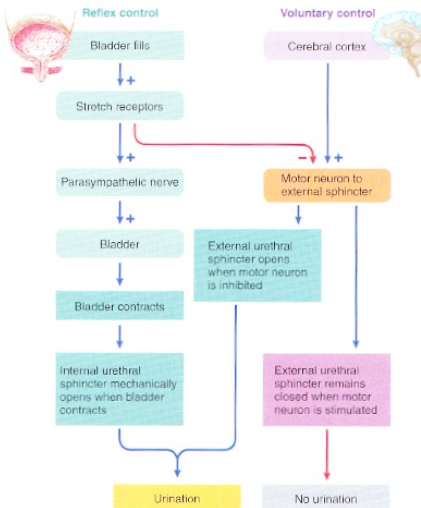Excretory 1
1/35
There's no tags or description
Looks like no tags are added yet.
Name | Mastery | Learn | Test | Matching | Spaced |
|---|
No study sessions yet.
36 Terms
Excretion
Maintenance of internal environment is vital to survival (e.g. cell integrity)
Needs the correct composition of water, solutes e.g. NaCl and low levels of waste
Delicate balance is affected by diet, metabolic products and loss/gain of water and solutes
Selective excretion
It is crucial to internal fluid homeostasis and involves several system
Primary functions of excretory systems are:
maintenance of inorganic solutes (e.g. Na+, K+, Cl-)
maintenance of proper plasma water volume
removal of metabolic waste product (e.g. urea)
maintenance of water balance
The selective excretion involves the following systems:
Respiratory (e.g. gills, lungs)
Digestive (e.g. liver, intestinal epithelia)
Skin and glands (e.g. salt glands)
Renal (e.g. Malpighian tubules, kidneys)
Nitrogen metabolism
Food produces CO2; protein and nucleic acid metabolism also produce nitrogenous waste (e.g. Proteins to Amino acids to Ammonia)
NH3 is highly toxic and can bind H+ to form NH4+, which is also toxic to particular neurons
0.05mM NH4+ inhibits mammal neutral function; 2mM in fish.
Thus NH3 and NH4+ must either be quickly excreted or converted to less toxic form
Nitrogenous waste products
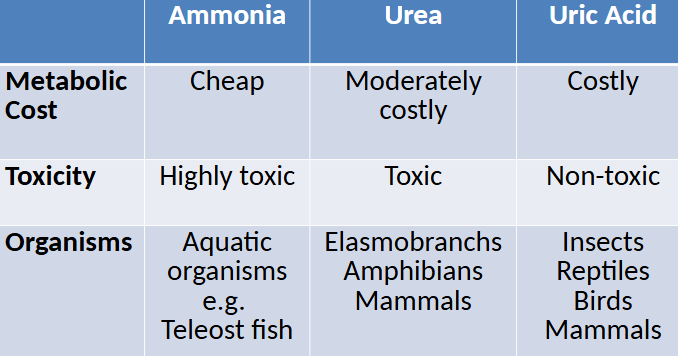
Epithelium
Sheet of cells that covers a body surface or organ, or lines a cavity and forms a boundary between functionally different regions of the body or between the animal and the external environment.
Epithelial transport
Numerous functional capacities
Play major functional roles in animal physiology, particularly in excretion
Epithelial tissue diagram
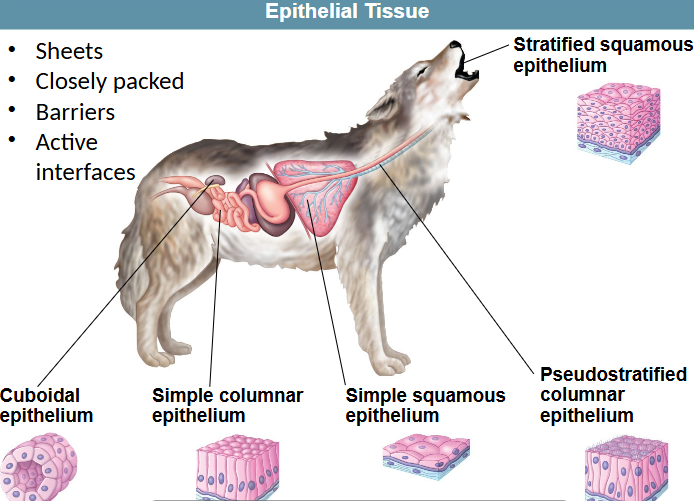
Epithelial cells can form:
Sheets or layers e.g. skin
Tubules e.g. kidney nephron
follicles (hollow globes) e.g. sweat glands
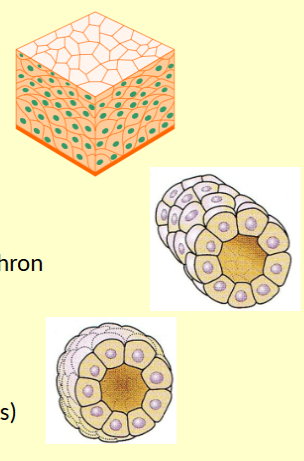
Transcellular vs Paracellular transport
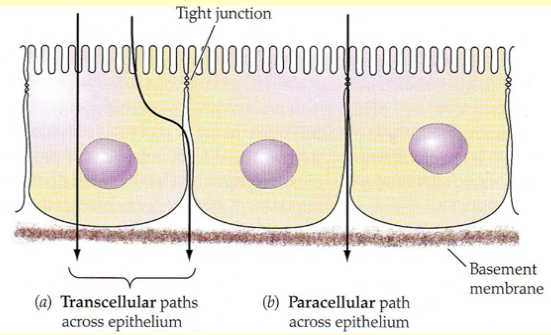
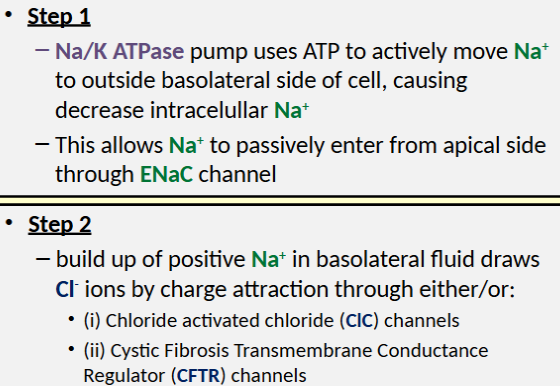
Salt Transport Only
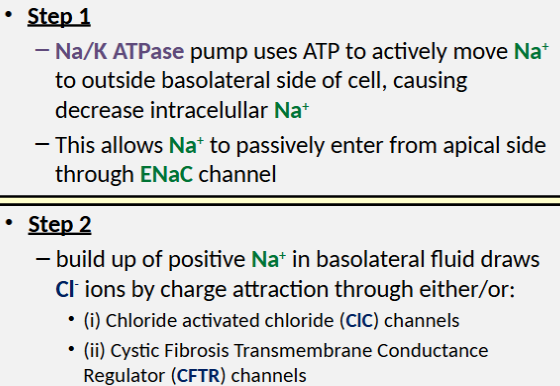
Salt Transport diagram
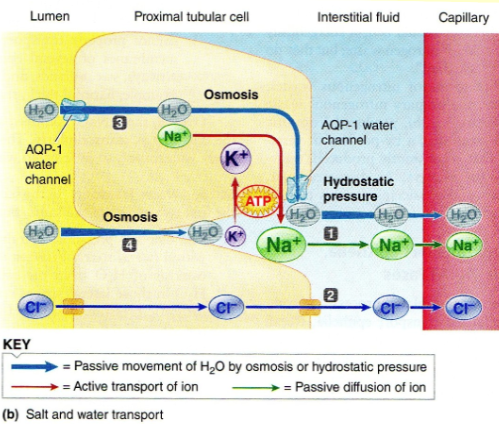
Renal tubes
Produce urine and heavily rely on transport epithelia
Renal tubule processes and renal organs:
Involved processes:
Filtration
Secretion
Reabsorption
Osmoconentration
Major renal organs:
Protonephridia
Meso- and Metanephridia
Malpighian tubules
Protonephridia
In simple animals (e.g. flatworms)
Ultrafiltration driven by cilia in ducts (‘‘flame’’ cells)
Ducts projects into body cavity
Process involves both secretion and absorption

Mesonephridia and Metanephdria
In animals with 2 or more major fluid spaces (e.g. coelom and circulatory system)
Basically consist of
filtering capsule/funnel-like opening
tubule segment for selective secretion + absorption
Canal or ureter leading to bladder
Verebrates tubules are called:
Nephrons
Invertebrates tubules are called:
Metanephric-type tubules also present in molluscs, annelids and some arhtropoda
Crustacean Antennal Gland
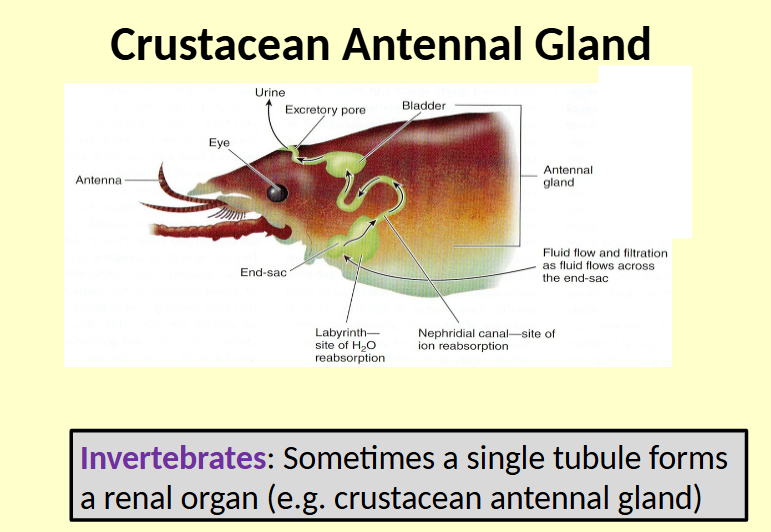
Diuretic Hormonee
e.g. mosquito
Must excrete large fluid load
Include serotonin and mosquito natriuretic peptide (MNP)
Enhance secretion
Anti-diuretic hormone
e.g. mealworm beetle
consume dry food and need to retain fluid
tenmo-adfa reduces secretion and hence conserves water
Elasmobranch fish
Retain urea and trimethylamine oxide (TMAO) as osmolytes, TMAO helps retain the urea for long periods of time to balance the creature.
Osmoconformers
Body fluids matches external environment (e.g. seawater); osmolality ~1000mOsm
Use gills, kidneys and rectal glands for excretion and retention (e.g. sharks and rays)

Marine bony fish
Use gills for most excretion and retention processes
Osmoregulators
e.g. blue fin tuna
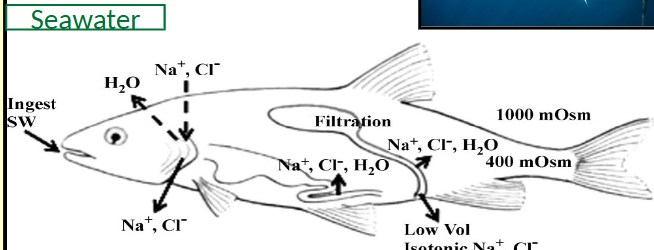
Freshwater bony fish
excrete water with their kidneys
use gills to excrete wastes and take up salts
Osmoregulators
e.g. Mozambique tilapia
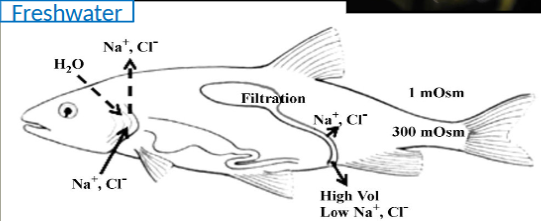
Terrestrial vertebrates
Evolved new renal and external mechanisms to maintain ‘‘internal ocean’’
Human kidney, functional unit = Nephron
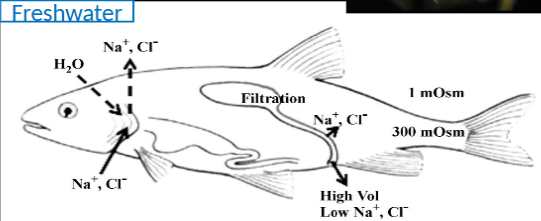
Amphibians
Use kidneys and bladder for excretion and retention
Non-avia reptiles
use amphibian-like kidneys, hindgut and salt glands for excretion and retention (in marine and desert species.
Birds
Have kidneys with both reptile-like and mammalian like nephrons, hindguts and salt glands for excretion and retention (in marine species)
Mammals
Kidneys have two different nephrons:
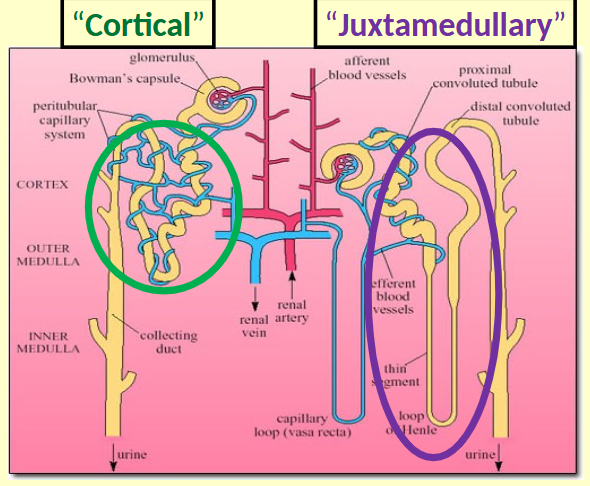
Functions of nephron regions
Humans: filter ~180 litres of blood per day: ~99% of reabsorbed, ~1.5 litres of urine produced
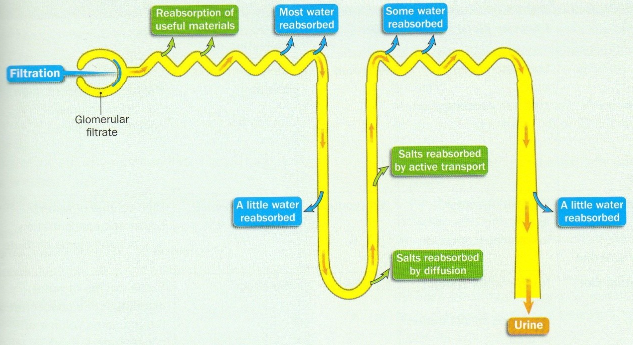
The urinary system diagram
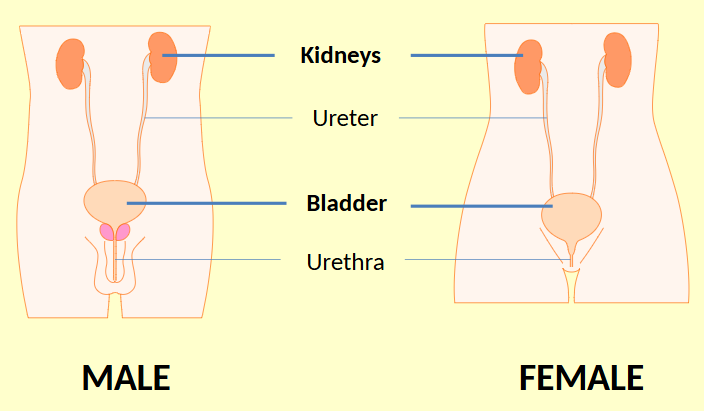
Rat Urinogenital Tracts (dissected)
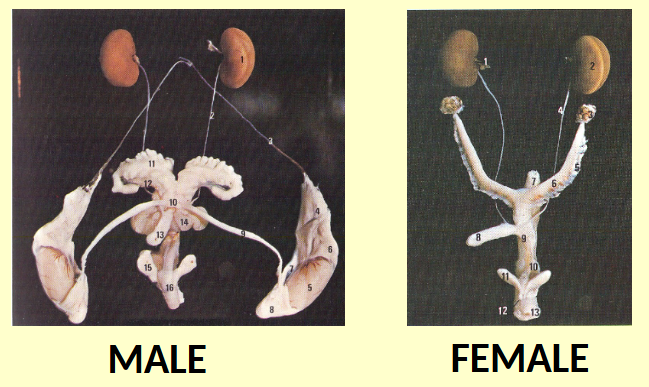
Bladder storage and Micturition
Mammals, amphibians and fishes. Urine is temporarily stored in the bladder
Bladder wall = smooth muscle lined with special epithelial cells (umbrella cells)
Exit of urine guarded by two urethral sphincters
Internal: smooth muscle, no control
External: skeletal muscle, under cortical control via motor neurons
Emptied by process of micturition (e.g. urination)
Diagram of human bladders
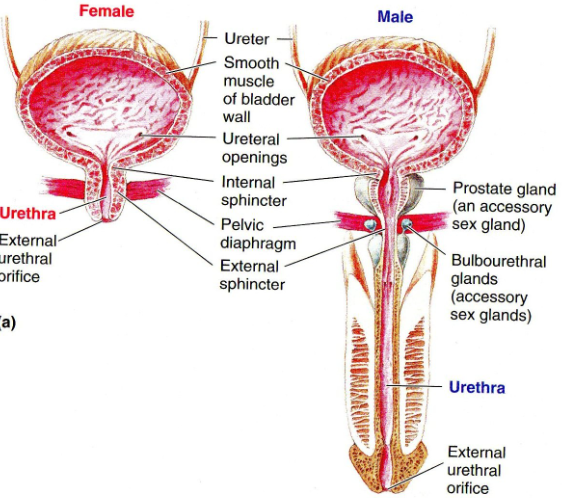
Control of Micturition
